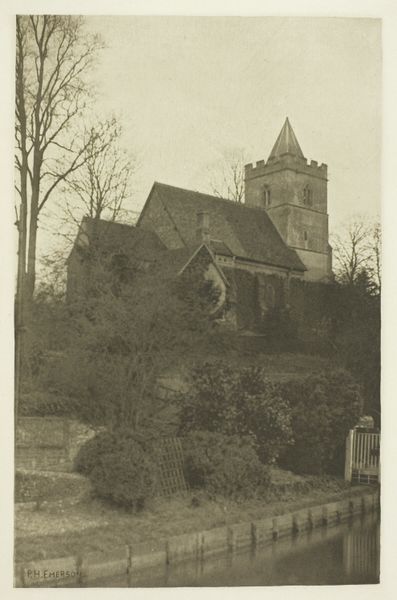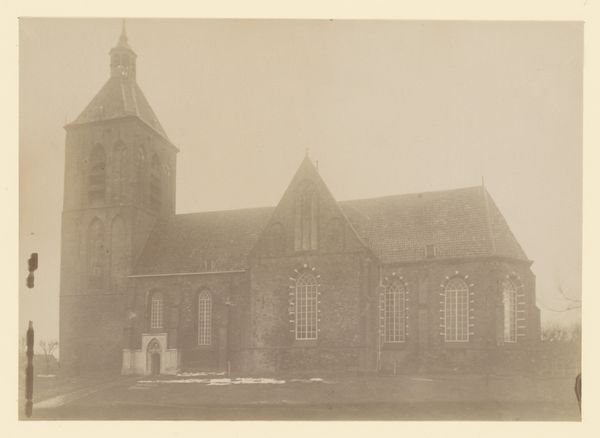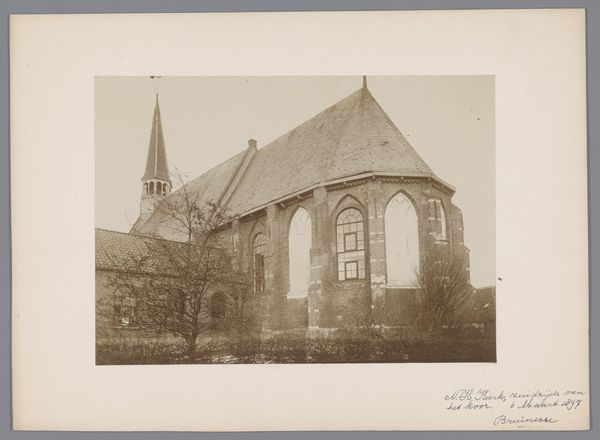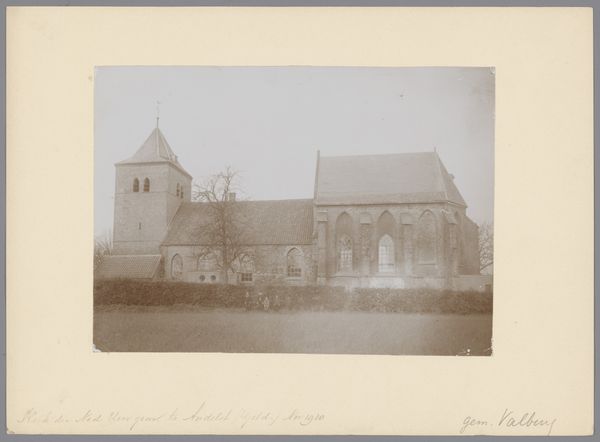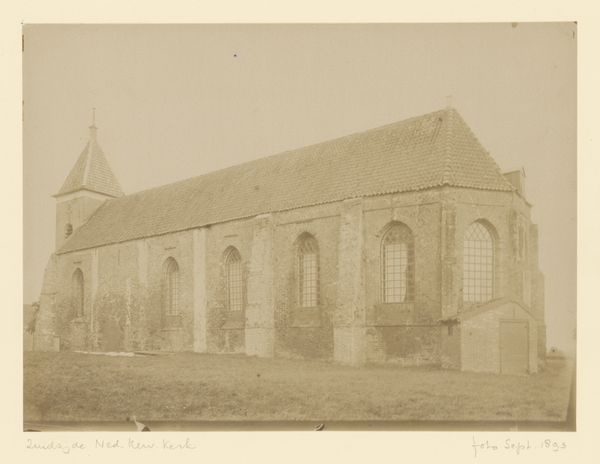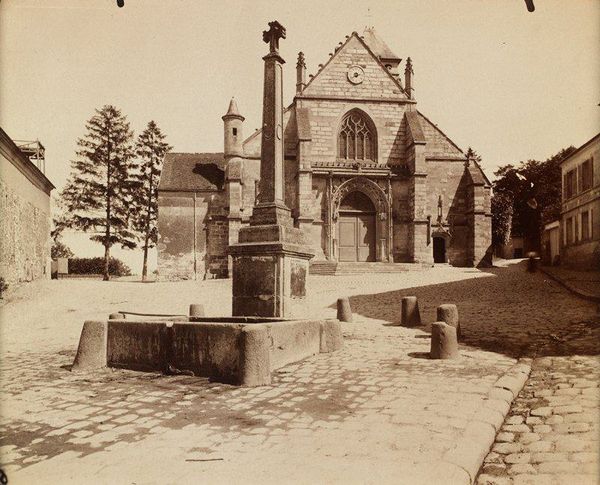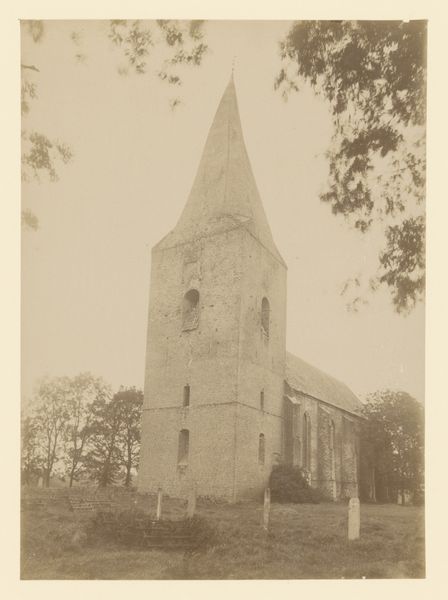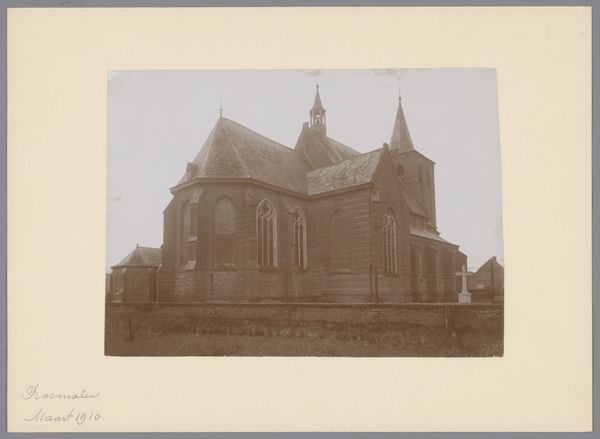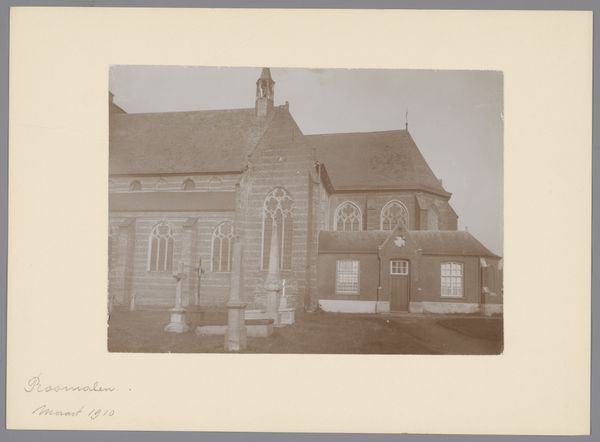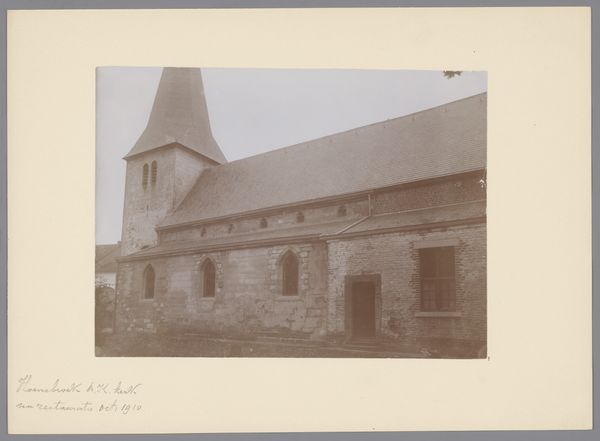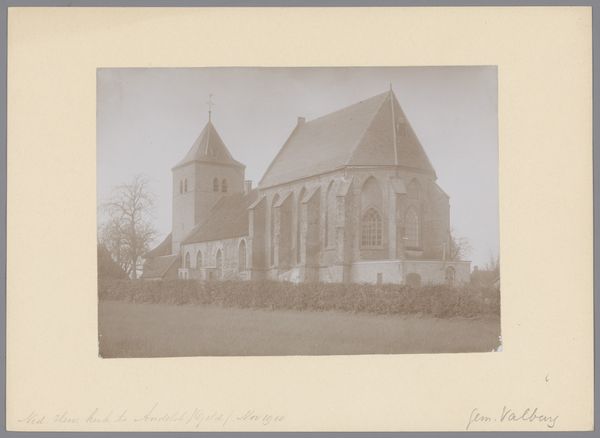
daguerreotype, photography, architecture
#
landscape
#
daguerreotype
#
historic architecture
#
photography
#
architecture
#
realism
#
historical building
Dimensions: 32.4 x 43.2 cm. (12 3/4 x 17 in.)
Copyright: Public Domain
Editor: Looking at Edouard Baldus's daguerreotype, "Eglise d'Auvers," taken in 1855, I'm struck by the image’s stoic quality. The church looms, steadfast and impressive. What’s your take on its historical context, especially given Baldus’s career? Curator: This image isn't just a picture of a church; it’s a record of French ambition during a period of significant social and political change. Baldus was heavily involved in documenting architectural projects commissioned by Napoleon III, wasn’t he? Editor: Yes, he was involved in several major commissions! Curator: This image shows a specific kind of engagement: documenting and implicitly validating sites and spaces of historical significance. Baldus was also documenting the shifting perception of historical places. It represents the cultural power these monuments embodied in the mid-19th century. How do you think photography itself impacted views of architecture at the time? Editor: I suppose photography allowed a wider audience to appreciate architectural achievements, especially as reproducibility increased over time. But was it ever seen as… too accurate, or maybe soulless compared to other art forms? Curator: It’s an interesting point! The accuracy granted prestige, lending weight to architectural projects in a way that drawings may not have achieved. Baldus was producing "truthful" representations of grand architecture that validated the regime’s ambition, connecting the present with a curated vision of the past. Editor: So it was a political tool, showcasing France's architectural heritage, while also perhaps signaling a sense of national pride and continuity. Curator: Precisely! And by appreciating these complexities, we gain a deeper understanding not only of the photograph itself, but the social forces at play in its creation and reception.
Comments
No comments
Be the first to comment and join the conversation on the ultimate creative platform.
